Sikorsky Product History
Sikorsky S-70A: UH-60A Black Hawk
Background
The UH-60A was the first model of the long Black Hawk helicopter series that officially started on December 23, 1976 when Sikorsky was selected by the U.S. Army to build a production version of its YUH-60A Utility Tactical Transport Aircraft System (UTTAS) prototype. A detailed description of the design and development of that prototype can be found in this Sikorsky Product History website. All of the technologies and design innovations of the UTTAS, as well as its configuration changes that resulted from its flight development program, were incorporated into the UH-60A.
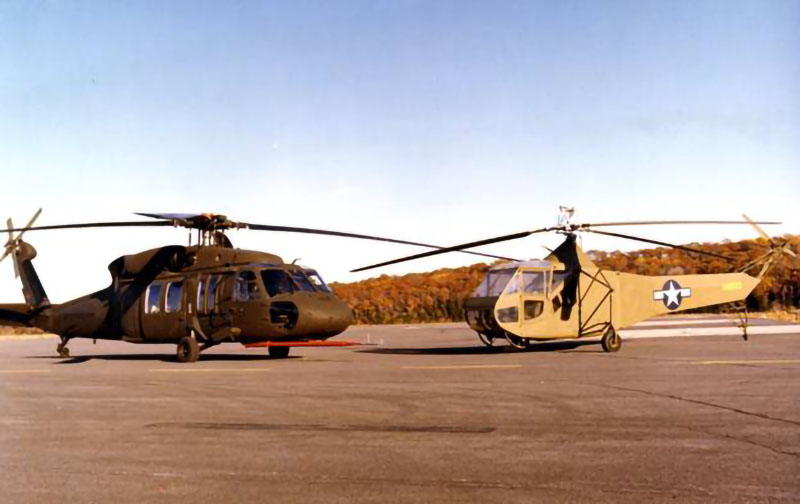
The first UH-60A, built during the first year of low rate initial production, was delivered to the Army in 1978 and entered service with the 101st Combat Aviation brigade of the 101st Airborne Division in June 1979.
Along with the award for the initial low rate production, Sikorsky also was awarded contracts for the Maturity Phase and for the Producibility Engineering Phase. The purpose of the Maturity Phase was to continue and complete all the testing required by the Airworthiness Qualification Specification that was started under the earlier prototype contract. Activities under the Producibility Engineering Phase contract focused on modifying component designs and tooling in order to reduce manufacturing costs. An additional objective was to reduce component weights where possible in order to start the production with an underweight aircraft to allow for later installation of added mission equipment and features. This weight reduction effort achieved a reduction in aircraft empty weight of approximately 1,000 lb. from the prototype YUH-60A to the first production UH-60A.
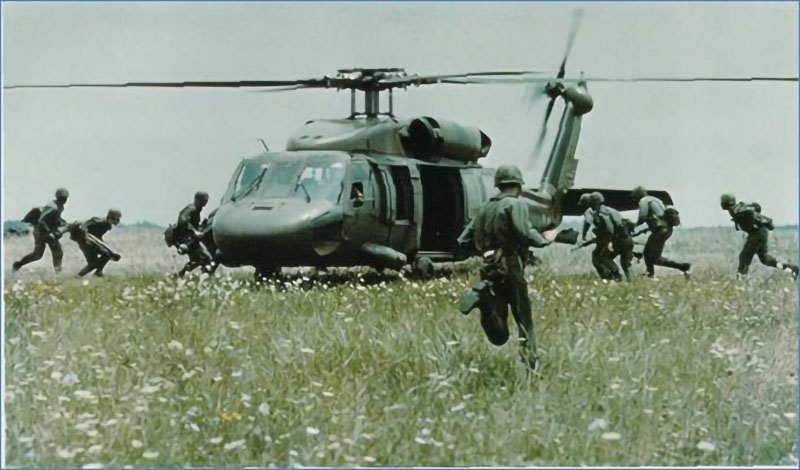
The Black Hawk’s second important mission after troop assault was aeromedical evacuation from the combat zone. During the early production period, medical evacuation capability was achieved by installing 6-patient litter racks in place of troop seats in addition to medical care equipment.
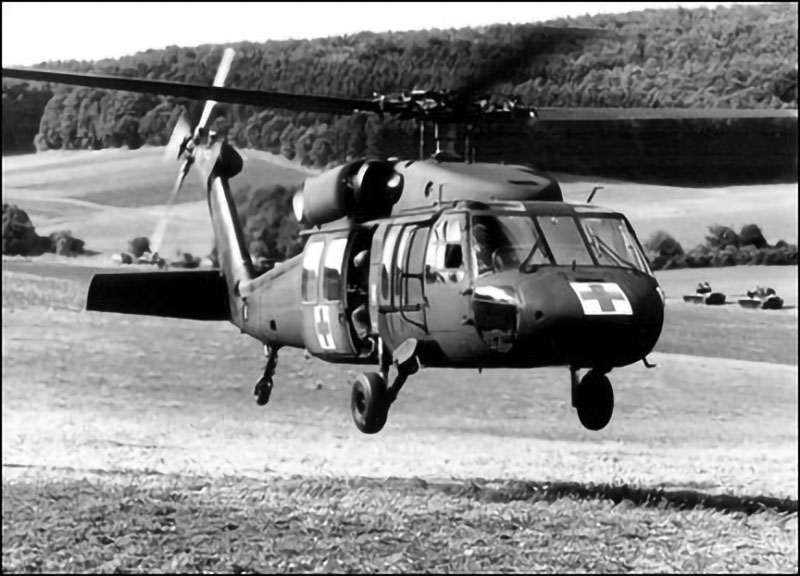
These early conversions of the UH-60A model created the first generation MEDEVAC helicopters. Later in the production period, when new Black Hawk models began to replace the UH-60A, specialized medical configurations were developed containing high technology medical equipment that provided far better patient care and access in flight. These dedicated medical configurations are described in the UH-60L and UH-60M sections of the Sikorsky Model History website.
Production of the UH-60A model continued uninterrupted from 1976 into 1989 when production of its replacement, the uprated UH-60L model began. A total of approximately 1,000 “A” models were built for the U.S. Army and some for international military organizations. During that period many derivatives and variants of the Black Hawk were designed and most were put into production. The most important major derivative was the SH-60B Seahawk developed for the U.S. Navy whose program and description are accessible on this website. Two Black Hawk variants for the Army, both for electronic warfare, are described below. A variant for the Army Special Operations Command, the MH-60K, was developed late during production run of the UH-60A but was upgraded during the UH-60L production period. Its description is provided in the UH-60L history in this website.
Configuration Features
The configuration features described for the S-70 YUH-60A UTTAS were all applicable to the UH-70A Black Hawk. Its titanium main rotor blades, elastomeric main rotor head, and two-position raised rotor were all part of the UH-60A configuration. Similarly, the canted cross-beam tail rotor and stabilator design continued to be part of the Black Hawk.
During qualification testing conducted in the Maturity Phase, additional design refinements were incorporated to further reduce vibrations for the production aircraft. These included enlarging the main rotor bifilar absorber and changing the shape of the pendulum bushings from circular to cycloidal in order to avoid absorber detuning during large motions of the pendulums. Spring-mass absorbers were installed in the main landing gear stub wings to reduce roll vibration levels and a similar absorber was installed in the nose to smooth out remaining cockpit vibrations. This vibration control configuration remained essentially the same for all Black Hawk production models for a quarter century until the introduction of the UH-60M model that incorporated newly developed vibration control technology. A description of the UH-60M is accessible on this site.
During the early years of production, provisions were added to the airframe to allow future installation of new special equipment being developed for the UH-60A. In some cases the equipment itself was installed as the aircraft were being built. Among the most important survivability features added was the Hover Infra Red Suppressor System (HIRSS) to reduce engine exhaust IR signature in all flight regimes down to hover flight. The initial suppressor system in the YUH-60A UTTAS was designed to provide effective signature reduction only at cruise speeds above 80 knots by using ram air to mix with and cool the exhaust plume. However the Army tightened its requirement when new technology permitted achievement of required signature levels down to zero flight speed by using air entrainment and mixing features integral with the engine installation. With this major improvement, the HIRSS became part of the aircraft configuration.
Also added to the production configuration was the rotor electrical deicing system. All the equipment to de-ice the main and tail rotor blades was installed as an integral part of the aircraft rather than as an optional kit as initially planned. Permanent installation of the de-icing package permitted Black Hawks to be deployed anywhere in the world and to fly safely during moderate icing conditions.
Additional features added during the early UH-60A production period included cable cutters above the cockpit and on the landing gear drag beams for protection against wire strike. Also added were provisions for a rescue hoist, a flight data recorder, installation of the M134 Minigun in place of M60 machine guns and various other features.
The stability augmentation system (SAS) of the Black Hawk was changed during the Maturity Phase from the original fluidic SAS used on the UTTAS to an all-electronic system that initially was a combination analog and digital systems. The electronic system greatly expanded the functions provided by the SAS to include attitude and speed hold functions as well as vehicle management systems. During a later production period, this system was changed to a dual digital SAS with each having approximately 5% control authority
General Arrangement Drawing
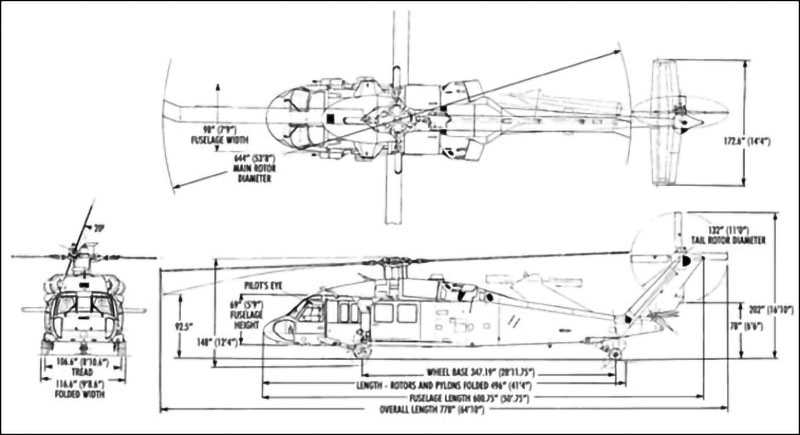
Mission Systems
During its early production, the UH-60A carried few systems essential to its mission other than its crashworthy troop seats and an M60 window-mounted gun for suppressive fire in the landing zone. A 6-patient litter rack was designed that could be installed in place of the troop seats for medical evacuation missions. During the 1980 decade as noted above, the rotor deicing system previously offered as an option became standard equipment as did the new Hover Infrared Suppression System (HIRSS).
The most significant mission system developed the early production period was the External Stores Support System (ESSS) for carrying fuel tanks and weapons systems. The external stores support system was designed to carry approximately 5,000 pounds per side. It was qualified to carry two 450-gallon tanks on the inboard pylons and two 230-gallon tanks on the outboard pylons. With this fuel load added to the internal tanks, the UH-60A was able to fly over 1,100 nautical miles and self-deploy to distant sites. All structural members of the ESSS were constructed of graphite-epoxy composite materials to keep weight to a minimum. This system was initially delivered as a kit for field installation, however its associated structural and electrical provisions were incorporated in every production UH-60A.
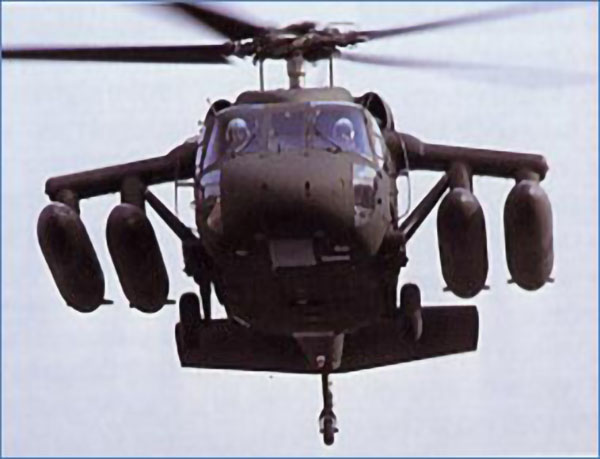
The load carrying capacity of the ESSS led to qualification of a variety of weapon systems that could be carried externally. The first weapons system to be demonstrated and qualified for the UH-60A was the Hellfire missile.

Other weapons that could be carried on the ESSS included the Stinger, Maverick and Sidewinder missiles as well as twin pod 2.75 inch unguided rockets on each of the four stations.
The UH-60A was also qualified to carry cabin-mounted weapons including the standard M-60D 7.62 mm machine gun and the GAU-19 0.50 caliber 3-barrel Gatling gun with up to a 2000 round per minute firing rate. Others include the GAU-2B 7.62 Minigun and the M-230 30mm chain gun, which could be carried on the ESSS as well.
General Characteristics and Performance
The key parameters of the rotors and transmission system remained constant during the 11-year production run of the UH-60A model.
- Main rotor diameter: 53.6 ft., 4 blades, airfoil SC1095 and SC1094R8.
- Main rotor blade chord: 1.73 ft., tip swept aft 20 degrees, negative blade twist of 18 degrees.
- Main rotor solidity: .083, main rotor tip speed: 725 fps.
- Main rotor head equivalent flapping hinge offset of 15 in.
- Tail rotor diameter: 11 ft., 4 blades; chord .81 ft., airfoil SC1095.Tail rotor solidity: .1875, tail rotor tip speed: 699 fps.
- Main gearbox rated power: 2,828 hp.
- Main gearbox input/output speeds: 20,000/258 rpm.
- Engines: Two T700-GE-700, intermediate rated power: 1,622 HP at SL-STD conditions.
- Weight empty of the first production UH-60A: 10,387 lb.
- Mission gross weight of the first production UH-60A: 15,976 lb.
- Weight empty of the last production UH-60A: 11,253 lb.
- Mission gross weight of the last production UH-60A: 16,803 lb.
- External cargo hook capacity: 8,000 lb.
- Performance of the first production UH-60A: vertical rate of climb of 1,000 fpm and cruise speed of 145 knots at 4,000 ft. 95 degrees F.
- Performance of the last production UH-60A: vertical rate of climb of 390 fpm and cruise speed of 139 knots at 4,000 ft. 95 degreesF.
Production History
The first UH-60A production contract awarded in December 1976 for Low Rate Initial Production (LRIP) that included 15 units during the first year along with fixed-price options for the next three years totaling 353 Black Hawks. In 1981 after the LRIP was completed, the Army elected to award multi-year contracts to Sikorsky starting with three-year contracts and later extending to five-year awards. These contracts also began to include US Navy Seahawks as well as foreign military sales. As of the time of this writing, a total of seven multi-year contracts have been awarded with the most recent signed in 2007 to cover five years of production with a total potential value approaching 12 billion dollars. This represented the largest single contract ever received by Sikorsky Aircraft or by the United Technologies Corporation. The total quantity of delivered Black Hawks and its derivative models will be close to 3,000 aircraft by the end of this seventh multi-year contract.
The last UH-60A was delivered in 1989 after approximately 1,000 were built. At that time deliveries of the UH-60L model began. The “L” model had more powerful T700 engines driving an up-rated transmission system plus strengthened flight controls as well as other significant improvements over the original “A” model. More information about the UH-60L is available in this Sikorsky Product History website.
Related Models
Many derivative models of the Black Hawk were produced starting early in the 1980 decade. The first and most notable major derivative of the Black Hawk was the SH-60B Seahawk which itself spawned a long line of ship-based maritime derivatives. Information about the Seahawk models can also be found on this Sikorsky Product History website.
While the UH-60 A Black Hawk was being produced, the Army contracted Sikorsky to develop two unique UH-60A derivative models specifically for electronic missions. They were the YEH-60B SOTAS and the EH-60A/C Quick Fix.
The YEH-60B was configured to carry the Army’s Stand Off Target Acquisition System (SOTAS) that featured a large rotating radar antenna designed to detect moving targets on the battlefield. The main landing gear had to be lengthened to provide ground clearance for the antenna pod but the gear had to retract to allow the antenna to rotate when it was deployed.
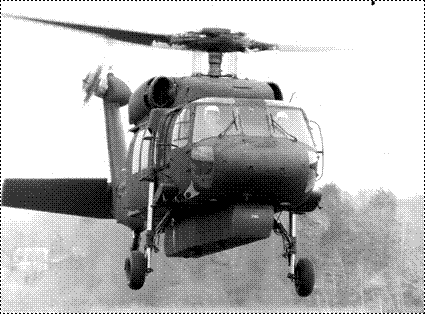
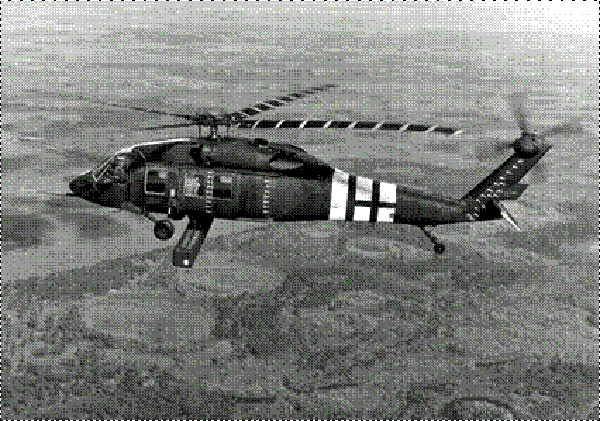
Only one prototype YEH-60B was built, which first flew in February 1981. It never was put into production as the Army transferred its support to the proven JSTARS program.
The second electronic derivative of the UH-60A was the EH-60A/C Quick Fix whose purpose was to intercept, monitor, locate and jam enemy radio transmissions. It did that by four-dipole antenna mounted on the tailcone and a retractable whip antenna mounted below the airframe that provided the jamming function.
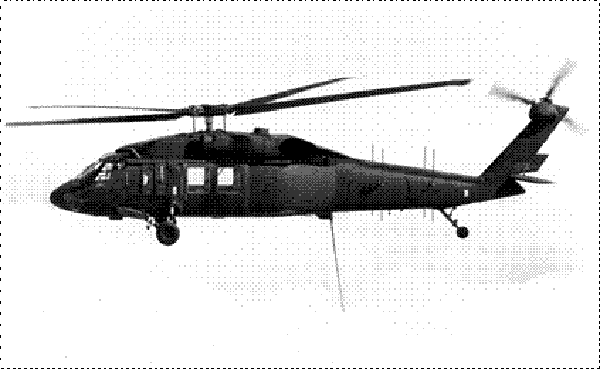
First flight of the EH-60A took place in September 1981 and was followed by a full qualification program leading to release for production. Production ended seven years later after 66 units were produced for the Army.
The UH-60A Black Hawk was itself replaced near the end of the 1980 decade by the more powerful UH-60L model which in turn was replaced by the more advanced UH-60M model late in the 2000 decade. Information about these two Black Hawk models and their respective derivative models can be accessed on this website.
Additional Information Sources
Additional background and technical information regarding Black Hawk and Seahawk models can be found in the book entitled “Black Hawk, the Story of a World Class Helicopter” written by Ray D. Leoni and published by the American Institute of Aeronautic and Astronautics in 2007. ISBN-13:987-1-56347-918-2.
by Ray D Leoni
Related Articles
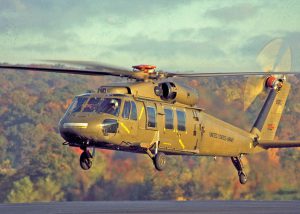
Sikorsky Takes the UTTAS Prize
The first flight of Sikorsky Aircraft’s Black Hawk occurred 50 years ago, on October 17, 1974. Since then, over 5000 Black Hawks have been delivered to customers, making it Sikorsky’s longest production program.
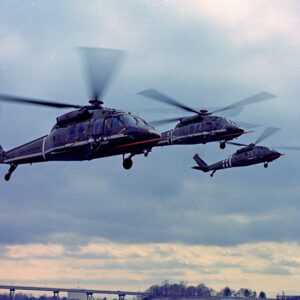
Bill Paul: Reflections on Sikorsky’s 100th Anniversary
Former Sikorsky President Bill Paul reflects on his career with Sikorsky, meeting Igor Sikorsky, and the Sikorsky Aircraft Company’s 100th anniversary.
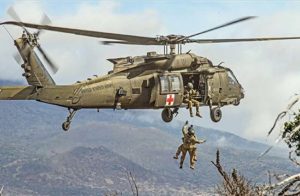
Sikorsky Lifts the Army
The U.S. Army saw the possibilities of the helicopter early in its development, thus beginning a relationship with Sikorsky Aircraft that continues to this day.
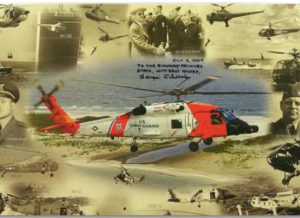
Sikorsky Serves the Coast Guard
A flight demonstration of Igor Sikorsky’s VS-300A helicopter at Bridgeport, Connecticut in April 1942 started an air-sea rescue revolution in the U.S. Coast Guard.
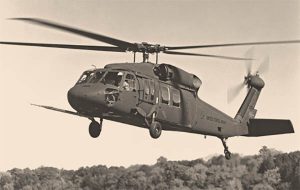
Bill Paul: Management Contributions to the Black Hawk Helicopter’s Success
Bill Paul recollects one of the key milestones of Sikorsky history, the win of the UTTAS program that became the Black Hawk helicopter.
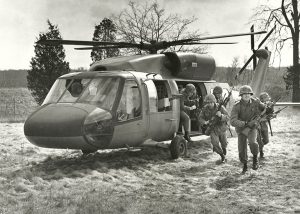
Ray Leoni: Recollections of a Sikorsky Junior Engineer
Ray Leoni recollects his 41-year career at Sikorsky Aircraft, beginning as a junior engineer and retiring as a Senior VP of Engineering and Advanced Programs.
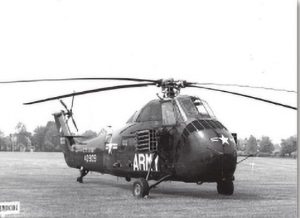
Evolution of the Armed Helicopter
Military users quickly understood the flexibility and fire-power of rotary wing platforms and ultimately evolved highly integrated weapons systems ready to protect themselves and others.
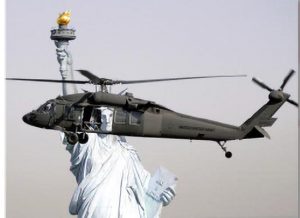
The Sikorsky Black Hawk in U.S. Military Service
When Black Hawk program manager Colonel Richard Kenyon received keys to Sikorsky’s first production UH-60A on October 31, 1978, the U.S. Army received the powerful, hardened assault helicopter it wanted.

Sikorsky Helicopters in U.S. Air Force Rescue Squadrons
The HH-60W Combat Rescue Helicopter is the latest in the life-saving line of Sikorsky helicopters made for U.S. Air Force Rescue Squadrons. The Whiskey will round out a century of vertical flight rescue heroism.
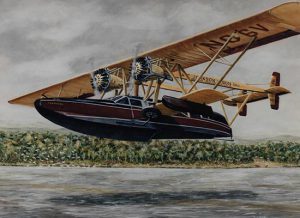
Sikorsky Aircraft Color Schemes
This issue of the newsletter illustrates some of the artistic variations in the exterior color schemes of aircraft delivered during Igor Sikorsky’s three careers.
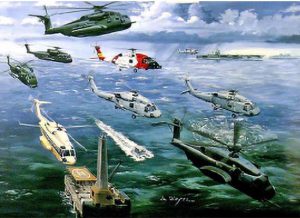
Sikorsky Aircraft Paintings by Andy Whyte
This issue of the newsletter is devoted to the aircraft designs and paintings by Andy Whyte, who had a 40 year career at Sikorsky Aircraft.

U.S. Coast Guard and Sikorsky Celebrate Significant Events
The United States Coast Guard and Sikorsky Aircraft celebrated two significant events in 2016. One century of United States Coast Guard aviation and the 127th birthday of Igor Sikorsky.
